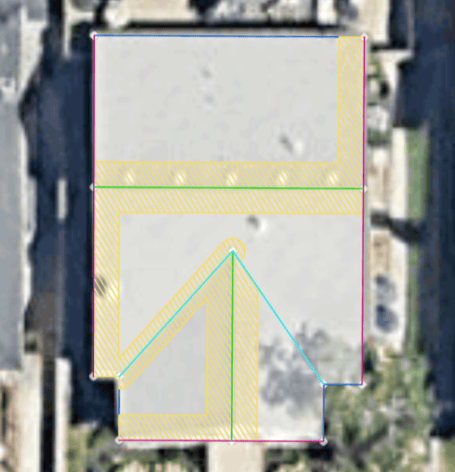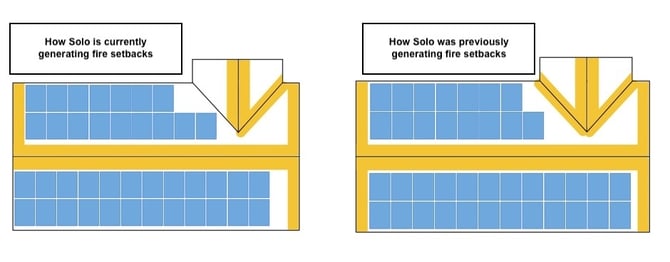How Fire Setbacks Work in Solo
Please note: fire setback logic was updated Q2-Q3 2025, the information below reflects the updated logic.
What are Fire Setbacks?
Fire Setbacks are required amounts of space between solar panels and the edges of a roof plane. These are meant to provide space to firefighters to walk on the roof in the case of an emergency, and are typically required by the AHJ (city, state, HOA, county, etc).

How are Setbacks Generated?
Fire setbacks are generated during the proposal creation process. Our Designers will draw and label rooflines, then fire setbacks will be automatically generated based on those rooflines.
What determines the setbacks being used?

Note: Adjacent roof planes without panels may satisfy the path requirement.
Fire setbacks use the following measurements:
- Ridges - 36"
- Rakes - 18"
- Hips - 18"
- Valleys - 18"
- Eaves - 0"
Flat Roof Logic
Any flat roof (roof plane with a pitch of ≤ 9.46°) does not require fire setbacks. An exception to this would be if the roof plane is being used to satisfy minimum access pathway requirments (which primarliy applies to designs that include both flat and pitched roof planes).